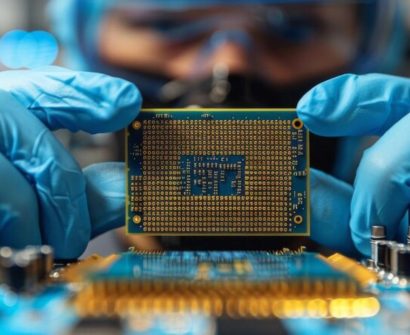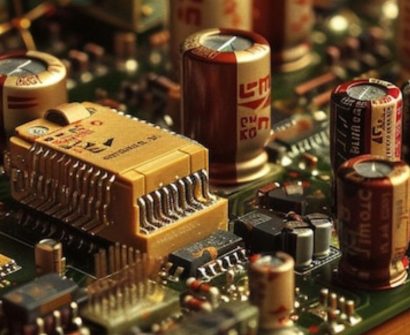Choosing the Best VLSI Domain for Your Career: A Comprehensive Guide

The world of Very Large Scale Integration (VLSI) is vast and ever-evolving, offering numerous career paths for engineering enthusiasts. Whether you’re a budding engineer or a seasoned professional looking to specialize, understanding the different VLSI domain within is crucial for making an informed decision. In this comprehensive guide, we’ll delve into the various VLSI domains to help you determine which one aligns best with your skills, interests, and career aspirations.
Understanding VLSI and Its Importance
VLSI technology involves integrating thousands to millions of transistors onto a single chip, enabling the creation of complex and powerful electronic systems. This technology is the backbone of modern electronics, powering everything from smartphones and computers to advanced medical devices and automotive systems.
Choosing the right domain within VLSI can significantly impact your career trajectory, job satisfaction, and growth opportunities. Let’s explore the primary domains in VLSI design and what each has to offer.
Major VLSI Domains Explained
1. Front-End Design
Front-End Design is the initial phase of the VLSI design process, focusing on the functional aspects of the chip. This domain involves translating system-level specifications into register-transfer level (RTL) code using hardware description languages like Verilog and VHDL.
Key Responsibilities:
- Specification Analysis: Understanding and interpreting system requirements.
- RTL Coding: Writing efficient and optimized code to define chip functionality.
- Functional Verification: Ensuring the design meets the specified requirements through simulation and debugging.
Required Skills:
- Proficiency in HDLs (Verilog, VHDL).
- Strong understanding of digital logic design and computer architecture.
- Analytical and problem-solving abilities.
Career Prospects:
Front-End designers are in high demand across semiconductor companies and design firms. The role offers opportunities to work on cutting-edge technologies and lays a solid foundation for roles in system architecture and design management.
2. Back-End Design (Physical Design)
Back-End Design, also known as Physical Design, deals with converting the logical design into a physical layout that can be fabricated on silicon. This process involves placing and routing components while ensuring performance, area, and power specifications are met.
Key Responsibilities:
- Floorplanning: Determining the optimal placement of various blocks on the chip.
- Placement and Routing: Strategically arranging and connecting components.
- Timing Analysis: Ensuring signal timings meet the required specifications.
- Power and Signal Integrity Checks: Verifying that the design is robust against electrical issues.
Required Skills:
- Knowledge of physical design tools like Cadence Innovus, Synopsys ICC.
- Understanding of semiconductor physics and fabrication processes.
- Expertise in timing closure and power optimization techniques.
Career Prospects:
Back-End designers play a critical role in bringing designs to life. With the constant push for smaller and more efficient chips, skilled physical designers are highly valued, offering stable and lucrative career paths.
3. Verification
Verification ensures that the design performs as intended and is free of functional errors before fabrication. This domain is essential for maintaining quality and reliability in complex VLSI designs.
Key Responsibilities:
- Test Plan Development: Creating comprehensive plans to cover all functional scenarios.
- Testbench Creation: Developing environments to simulate and test the design.
- Debugging: Identifying and fixing functional bugs in the design.
- Coverage Analysis: Ensuring all parts of the design have been adequately tested.
Required Skills:
- Proficiency in verification languages like SystemVerilog and UVM methodologies.
- Strong analytical skills and attention to detail.
- Familiarity with simulation tools and debugging techniques.
Career Prospects:
Verification engineers are essential in the VLSI industry, with opportunities to work on diverse and complex projects. The role offers a blend of technical challenges and problem-solving opportunities, making it appealing for those who enjoy meticulous work.
4. Design for Testability (DFT)
Design for Testability (DFT) focuses on incorporating test structures into the design to facilitate easier and more effective post-production testing. This ensures that manufactured chips meet quality standards and function correctly.
Key Responsibilities:
- Scan Insertion: Integrating scan chains for testing internal nodes.
- Built-In Self-Test (BIST): Implementing self-testing mechanisms within the chip.
- Test Pattern Generation: Creating patterns to detect manufacturing defects.
- Fault Coverage Analysis: Assessing the effectiveness of test methods.
Required Skills:
- Understanding of test methodologies and fault models.
- Experience with DFT tools and ATP generation.
- Knowledge of hardware design and fabrication defects.
Career Prospects:
DFT engineers are critical in ensuring product reliability, with roles available in both design and manufacturing companies. The field offers specialized opportunities and is essential for maintaining high-quality standards in the industry.
5. Analog and Mixed-Signal Design
Analog and Mixed-Signal Design involves creating circuits that process both analog and digital signals. This domain is crucial for interfaces between the real world and digital systems.
Key Responsibilities:
- Circuit Design: Developing amplifiers, converters, and other analog components.
- Simulation and Modeling: Testing designs under various conditions.
- Layout Design: Ensuring physical layouts meet performance specifications.
- Performance Optimization: Enhancing signal integrity and reducing noise.
Required Skills:
- Strong foundation in analog circuit theory and signal processing.
- Proficiency with simulation tools like SPICE.
- Attention to detail and understanding of layout parasitics.
Career Prospects:
Professionals in this domain are sought after for their specialized skills, with opportunities in industries like telecommunications, automotive, and consumer electronics. The role offers challenging and rewarding experiences for those passionate about circuit design.
Factors to Consider When Choosing a VLSI Domain
Selecting the best VLSI domain depends on several factors:
- Personal Interests: Choose a domain that aligns with your passion and interests.
- Skill Set: Assess your strengths and technical skills to find a suitable match.
- Career Goals: Consider where you see yourself in the future and which domain offers the best pathway.
- Industry Demand: Research current market trends and demands to ensure job availability and growth.
- Learning Opportunities: Evaluate which domain offers continuous learning and development prospects.
Conclusion
The “best” VLSI domain varies for each individual based on their interests, skills, and career objectives. Whether you’re drawn to the logical challenges of Front-End Design, the intricate details of Physical Design, or the quality assurance focus of Verification and DFT, each domain offers unique opportunities and rewards.
Also Read : fpga architecture in vlsi
To know more about VLSI Course , SuccessBridge VLSI training institute. You can begin your VLSI career by enrolling in the placement-assisted live courses available at SuccessBridge We offer various VLSI online courses. We offer VLSI Physical Design course, Design Verification course, DFT Training , Chip design course many more. Explore VLSI Courses From The Leaders In VLSI Training
Before making a decision, take the time to explore each area, gain some hands-on experience through projects or internships, and consult with professionals in the field. This approach will help you make an informed choice that sets you on a fulfilling and successful career path in the dynamic world of VLSI design.






